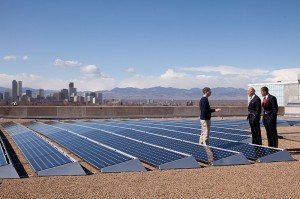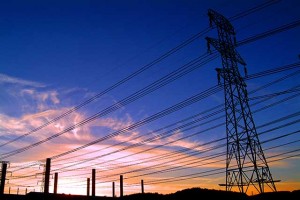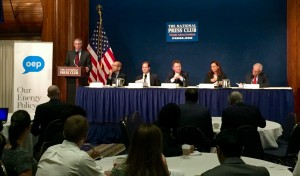23 item(s) were returned.
Partner
KL Gates
Last month the International Trade Commission (ITC) agreed to proceed with a trade case filed by the bankrupt solar manufacturing American company Suniva. Suniva has claimed that the current import price for certain photovoltaic solar panels is so low that it was damaging the US manufacturing industry and the only way to protect US manufacturers would be to levy a tariff on panel imports – the result would be to more than double the price of solar panels to $0.78/watt, potentially igniting a solar trade war. In order to prove its case, Suniva needs to show that the solar manufacturing… [more]
View InsightThere are over 90,000 cargo ships powered by oil-based fuels that, according to one study, account for 3-4% of worldwide emissions (including SOx, NOx, PM and CO2). In 2012, the International Maritime Organization sparked a series of regulations aimed at reducing sulfur emissions and in January, 2015, a new U.S. rule went into effect that requires ships operating in coastal waters to make further reductions. With an abundance of U.S. natural gas, one potentially cost-effective compliance option is to transition to marine shipping fueled by LNG, however, challenges remain. Supporters of LNG as a fuel source say it will reduce… [more]
View InsightIn 2014, the U.S. residential solar industry installed 1,231 MW of capacity and installation costs fell 10 percent. While lower prices made onsite solar energy more affordable and accessible for many Americans, the upfront costs still make solar installation out of reach to low-income communities that could benefit from alternative sources of energy. Over the past few years, governments at every level have been instituting programs that support low-income access to solar energy. In 2013, California extended two provisions of the California Solar Initiative, the Single-Family Affordable Solar Homes (SASH) and Multi-Family Affordable Solar Homes (MASH) programs, by providing an… [more]
View InsightLead Communications Consultant
Duke Energy
Industry experts recently testified before Congress that more needs to be done to protect the nation’s electric grid from natural disasters, cyberattacks, physical threats and planned sabotage. Recent news stories have highlighted grid security issues, including analysis by USA Today that claims the U.S. Department of Energy’s computer systems were compromised more than 150 times between 2010-2014. And while cybersecurity is a persistent threat, physical damage to “critical infrastructure” facilities from severe storms, flooding, wildfires, and even shootings, has the potential for extensive, long-duration outages: Critical high-voltage substations, while representing only 3% of all substations, carry the bulk of the… [more]
View InsightExecutive Director
Energy Storage Association
It’s been two months since the Environmental Protection Agency (EPA) released the Final Rule for the Clean Power Plan (CPP). Even if you haven’t read all 1560 pages yet, you probably know the gist of it by now. At its core, the CPP identifies three building blocks in setting the goal for each state: (1) lowered heat rates at coal-fired steam plants, (2) increased utilization of existing natural gas combined cycle plants, and (3) increased deployment of utility-scale non-emitting renewables. Most notably, energy efficiency (EE) is missing from that list, which is a change from the 2014 proposal. However, while… [more]
View InsightCrude oil prices have dominated headlines and industry attention over the past year. In 2014 and continuing in 2015, the Organization of the Petroleum Exporting Countries (OPEC) agreed to unconstrained output for it 12 member countries, resulting in a dramatic increase in global oil supply. Meanwhile, China and Europe’s demand for oil has remained relatively steady. In addition, U.S. domestic production nearly doubled since 2008, decreasing domestic imports and leaving more oil on the global market. As a result, oil prices fell from $90 per barrel in 2014 to $46 per barrel today and projections indicate prices between $30 and $60 per barrel… [more]
View InsightPolicy Associate
EESI
Although the administration’s finalized Clean Power Plan was released in early August, EPA is still actively grappling with the rules regarding biomass feedstocks as a compliance option under the Plan. Biomass (or biogenic) feedstocks include wastes such as organic wastes, lumber, pulp and paper industry wastes, agricultural residues and purpose-grown feedstocks. Solid biomass can be co-fired with coal in existing plants or used in renewable heating applications. The biomass industry argues that the utilization of biomass as an electricity source is an attractive option for states as it has the potential to sequester carbon as additional feedstocks are grown, it… [more]
View InsightOn September 16th, 2015, OurEnergyPolicy.org (OEP) hosted a panel event moderated by Mark Drajem of Bloomberg News on the EPA’s ozone rule and the energy sector at the National Press Club in Washington, DC. EPA is expected to announce a new standard for ground-level ozone, a smog-forming pollutant. Most believe they will reduce the existing standard from 75 parts per billion (ppb) to 65 or 70 ppb by 2025. According to EPA, this would prevent 4,200 premature deaths, between 1,400 and 4,300 asthma-related emergency room visits, and between 320,000 and 960,000 annual asthma attacks in children. The very spirited discussion… [more]
View InsightEditor
Bloomberg's First Word Energy
After years of discussion and delay, the Environmental Protection Agency (EPA) is set to finalize ozone standards in the coming weeks. It’s a rule long in the making: EPA’s decision during the Bush administration to set the standard at 75 parts per billion was challenged in court by health and environmental organizations as insufficient. At the beginning of the Obama administration, the EPA said it would reconsider the standard, but that initiative was tossed out by President Obama in the lead up to 2012 election. The move summed up the discord between the president and environmentalists in his first term.… [more]
View InsightWhile the Clean Power Plan has attracted a great deal of attention in recent weeks, a number of Congressional initiatives may well be the focus of the fall legislative session. With both the House and Senate considering what would be the first comprehensive energy packages since 2007, energy promises to play a prominent role when the congressional session resumes in September. A few potential initiatives include: Senate Energy and Natural Resource (ENR) Committee: ENR passed the Energy Policy Modernization Act of 2015. The bipartisan bill includes five titles focused on Efficiency, Infrastructure, Supply, Accountability and Conservation. House Energy and Commerce… [more]
View Insight








